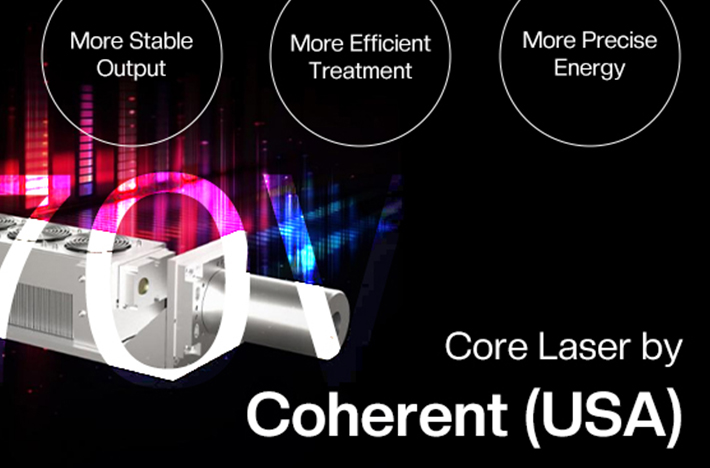The Cellular Revolution: A Deep Dive into How Pico Laser Technology Erases Pigmentation
Understanding the Pico Laser: A Leap in Chronological Precision
To appreciate the innovation of a pico laser, one must first understand the unit of time it employs. A pico laser machine is defined by its pulse duration, which is measured in picoseconds—one trillionth of a second. To contextualize this, a picosecond is to a second what a second is to approximately 31,700 years. This is a significant advancement over the previous generation of quality-switched (Q-switched) lasers, which operated in the nanosecond domain (one billionth of a second).
While a nanosecond is already incredibly fast, the reduction to picoseconds is not merely an incremental improvement; it fundamentally changes the interaction between light and matter. Traditional nanosecond lasers primarily rely on selective photothermolysis, a process where light energy is absorbed by a target (like melanin) and converted into heat, thermally destroying the pigment. This approach, while effective, generates residual heat that can diffuse into and damage surrounding skin tissue, leading to prolonged redness, swelling, and a significant risk of post-inflammatory hyperpigmentation (PIH), especially in individuals with darker skin tones.
The pico laser, by contrast, minimizes this thermal diffusion. Its pulse is so brief that the energy is delivered and the interaction is complete before heat can spread to the surrounding structures. This shift from a primarily thermal mechanism to a photomechanical one is the cornerstone of its success.
Core Components of a Modern Pico Laser System
A state-of-the-art pico laser is an engineering marvel, integrating several key components to achieve its remarkable results:
-
Laser Source and Wavelength Versatility: The heart of the system is typically a Q-switched Nd:YAG laser source, capable of generating multiple wavelengths. Common outputs include 1064 nm for deep penetration to treat dermal pigmentation, 532 nm for superficial epidermal lesions like sun spots, and often additional wavelengths such as 755 nm (Alexandrite) for targeting a broader range of pigmentation. Advanced models, like the referenced 2025 Picosecond Laser, may offer even more options (e.g., 585 nm, 650 nm, 1320 nm) to address various concerns from vascular issues to skin rejuvenation.
-
Precision Handpiece: The delivery system is equally critical. High-quality handpieces, often featuring imported optics, allow practitioners to adjust the spot size (e.g., from 2 to 10 mm). This adjustability enables customization of the treatment, using a larger spot for broader areas and a smaller, more focused spot for precision work on individual lesions.
-
Integrated Cooling Mechanism: To ensure patient comfort and further protect the epidermis, these devices incorporate sophisticated cooling systems. These may use cryogen sprays or built-in water circulation to maintain the skin’s surface at a safe temperature throughout the procedure.
.jpg)
The Core Mechanism: Laser-Induced Optical Breakdown (LIOB)
The true genius of pico laser technology lies in its primary mechanism of action: Laser-Induced Optical Breakdown (LIOB). This is a photoacoustic (sound wave) and photomechanical (pressure wave) phenomenon that allows for the destruction of pigment without significant heat.
A Nanoscale Step-by-Step Process
The process of LIOB is a fascinating journey into cellular biology:
-
Precise Pulse Absorption: The laser emits an ultra-short picosecond pulse at a specific wavelength (e.g., 532 nm or 1064 nm). This light energy is selectively absorbed by the melanin pigment residing within the melanosomes, which are the tiny, specialized organelles in skin cells that produce and store pigment.
-
Plasma Formation and Micro-Explosion: The instantaneous and intense absorption of energy by the melanin creates a state of matter known as plasma. This is not a burning process but rather an immediate ionization of the target. The rapid expansion of this plasma generates a controlled, shockwave-like micro-explosion within the confines of the melanosome itself.
-
Pigment Fragmentation and Clearance: This photomechanical shockwave shatters the melanosome and the pigment granules into minuscule, dust-like particles. The resulting fragments are so small that they are no longer visibly dark. The body’s natural waste-disposal system, primarily immune cells called phagocytes, then recognizes these inert particles as foreign debris. The phagocytes engulf the fragments and transport them via the lymphatic system to be safely eliminated from the body.
This entire sequence—from pulse delivery to pigment clearance—ensures that the surrounding skin cells, collagen fibers, and elastic tissue remain largely unaffected. The result is a gradual, natural-looking fading of the pigmented lesion without the wounding and extended recovery associated with older technologies.
Comparative Efficacy: Pico Lasers Versus Traditional Modalities
The superiority of pico laser machine pigment removal becomes starkly evident when compared to other common treatments. The following table illustrates a direct comparison:

Intense Pulsed Light (IPL) uses a broad spectrum of light, which is less specific than a laser’s single wavelength. This lack of specificity can lead to scattered energy absorption, making it less effective for deep pigmentation and increasing the risk of side effects. Chemical Peels work by chemically burning the outer layers of the skin, forcing it to peel and, in theory, slough off the pigmented cells. This is a non-selective, aggressive approach that causes significant inflammation, requires substantial downtime, and can paradoxically trigger more pigmentation in susceptible individuals.
The pico laser’s combination of high efficacy, minimal downtime, and low risk profile positions it as the gold standard for modern pigment correction.
.jpg)
Clinical Validation: Evidence from the Research Frontier
The theoretical advantages of pico lasers are robustly supported by a growing body of clinical evidence. Numerous studies have consistently demonstrated their effectiveness and safety across various skin types and pigmentation disorders.
-
Melasma Management: A significant challenge in dermatology is treating melasma, a stubborn, hormonally influenced hyperpigmentation. A randomized controlled trial pitted a 1064-nm pico Nd:YAG laser against a 755-nm Alexandrite laser and topical 2% hydroquinone (a standard depigmenting agent). The results showed that laser therapy achieved a faster reduction in the Melasma Area and Severity Index (MASI) score by the 24-week mark, with minimal adverse effects, offering a promising alternative to long-term topical medication use.
-
Long-Term Resolution of Post-Inflammatory Hyperpigmentation (PIH): For PIH—the dark marks that remain after acne or skin injuries heal—a 755-nm pico laser demonstrated impressive long-term results. In studies involving Asian patients, the treatment provided a 50-75% improvement, which was sustained over a follow-up period of three years, confirming its durability.
-
Comprehensive Pigment Clearance: A systematic review analyzing 77 separate studies (evidence levels I-IV) concluded that pico laser technology is both safe and effective for a wide range of benign pigmented lesions, including sun lentigos and age spots, as well as for overall skin rejuvenation. Crucially, the data indicates that pico lasers reduce the risk of complications like PIH by 27-54% compared to their nanosecond counterparts, a vital statistic for safely treating Fitzpatrick skin types III-VI.
The Synergistic Benefit: Beyond Pigment Removal to Holistic Rejuvenation
While the primary application of pico lasers is pigmentation removal, their impact extends far beyond. The same LIOB process that shatters melanin can be strategically used to stimulate the skin’s regenerative processes. By creating microscopic zones of injury in the dermis without damaging the epidermis, the laser tricks the skin into initiating a wound-healing response. This response includes a surge in the production of fresh collagen and elastin—the fundamental proteins responsible for skin’s firmness, elasticity, and youthful appearance.
Consequently, patients undergoing a series of pico laser treatments for pigmentation often report the welcome side effects of improved skin texture, refined pore size, and a reduction in the appearance of fine lines and wrinkles. This makes the pico laser machine a comprehensive tool for skin rejuvenation, effectively addressing both color and texture concerns simultaneously.
Safety, Aftercare, and Sustaining Results
The exceptional safety profile of pico lasers makes them suitable for a wider range of patients, including those with darker skin tones who were previously considered high-risk for laser procedures. The near-absence of thermal damage virtually eliminates the risk of burns and scarring.
Post-treatment care is straightforward but essential for optimizing results and preventing recurrence:
-
Immediate Aftercare: Following a session, the skin may exhibit mild redness or swelling, which typically resolves within a few hours to two days. The application of soothing creams containing ingredients like aloe vera or hyaluronic acid is recommended to calm the skin. Strict sun avoidance is mandatory for the first 48 hours.
-
Long-Term Maintenance: The single most important long-term measure is daily, rigorous sun protection using a broad-spectrum sunscreen with SPF 50 or higher. UV radiation is the primary driver of melanin production, and unprotected exposure can swiftly undo the benefits of treatment. Dermatologists may also recommend complementary topical agents, such as hydroquinone, retinoids, or vitamin C, to suppress new pigment formation and enhance the laser’s effects.
Conclusion: A New Paradigm in Precision Dermatology













Leave a Reply
You must be logged in to post a comment.